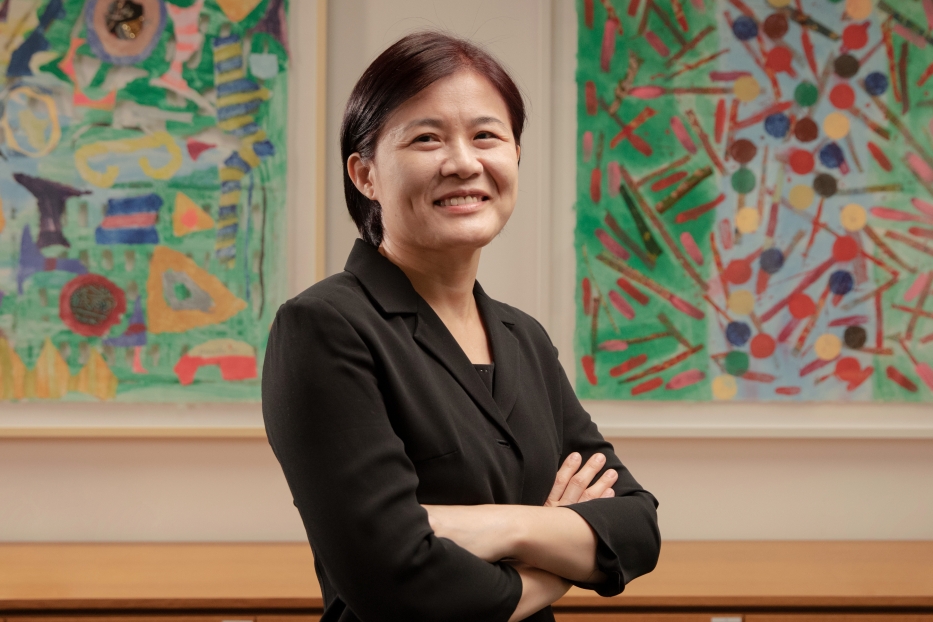Prof Chang Pao Li

Feature on Chang Pao-Li, Associate Professor of Economics
School of Economics, Singapore Management University
Looking beyond supply and demand in global trade
International trade and global supply chains have pushed globalisation like never before. But what exactly determines which goods arrive in your country? Factors impacting the global value chain are not merely based on supply and demand; sometimes, they can be shaped by the latest K-drama captivating audiences all over the world. Associate Professor Chang Pao Li sheds light on the nuances of global value chain and how Asia can take centre stage in the next phase of globalisation.
When considering Asian skincare products, South Korean brands undoubtedly lead the way with a vast array of innovations such as bee venom, snail slime, and pigskin collagen. It’s not an exaggeration to say that K-beauty is to cosmetics, what K-drama is to television. Since the 1990s, South Korea has swept the world with its cultural influence, using the Korean wave (or K-wave/Hallyu wave) as a soft power instrument.
The K-wave has significantly boosted South Korea’s bilateral trade flows with other countries. According to data from South Korea’s Ministry of Food and Drug Safety, in 2020 the country’s cosmetics trade surplus exceeded 6 billion USD. This makes South Korea the third-largest cosmetics exporter, behind only France and the United States of America.
Chang Pao Li, Associate Professor of Economics at Singapore Management University, is currently studying the factors that drive international trade and the global value chain. “One finding from my research is that while the K-wave promoted exposure of South Korean products in various categories to consumers around the world, the effect was stronger in women’s products compared to men’s products,” shares Chang, adding that consumers were more interested in South Korean products that are more distinctly associated with the K-wave.
Chang continues, “This is interesting because we often think about trade on a more general basis, in terms of supply and demand, policies, and so on. However, from this case study we can really see how the global value chain is not that linear – consumer preferences can shift because of cultural consumption and soft power.” Quantifying the effect of such shifts in trade flow is one focus area of Chang’s research in the global value chain.
Shedding light on the positives of global trade
Most recently, Chang is investigating the welfare effects and distributional consequences brought about by trade liberalisation efforts of the World Trade Organisation (WTO). Compared to when the GATT (the predecessor of the WTO) was first initiated in 1947, the world economy now is much more liberalised. While it has been suggested that global trade negatively impacts the environment, labour standards, and exacerbates income inequality, Chang’s research has reached the opposite conclusion. “WTO-induced liberalisation has actually helped to narrow the income inequality across countries. This is a line of research I have been consistently pursuing, and which I find very meaningful,” she says.
Where Singapore stands in the global value chain
By uncovering the nuances in the global trade ecosystem, Chang’s research can help advise on the actionable steps that countries can take to gain a competitive advantage. In one project, she looked at Singapore's aggregate and bilateral exports to various trading partners and calculated the proportions of foreign- versus local-contents in Singapore’s gross exports. The aim is to quantify or identify Singapore’s position in the global value chain.
Chang explains, “If 1 dollar of Singapore’s gross exports consists of 60 percent foreign value-added, and we compare this to Japan, where only 10 percent of its gross exports are foreign value-added, we may say that Japan is positioned more upstream and Singapore is more downstream in the global value chain,” in the sense that Singapore’s production of gross exports embodies a greater extent of foreign contents and is positioned closer to the final demand.
Many might be concerned about the fact that Singapore is placed relatively downstream, and whether that carries implications. Chang asserts that these classifications need to be taken into context. “In general, I don’t think it’s something to be alarmed over. Some sectors in Singapore, such as computer electronics, are more upstream; whereas when it comes to professional and business services, it’s naturally more downstream,” she explains.
Instead of looking at upstream and downstream as being a value marker, it should be taken as insights that inform our next steps to create an extra edge for Singapore’s economy. Chang adds, “For example, Singapore could move towards upstream by leveraging talent and resources to focus on more niche areas such as Research and Development.”
Asia as the centre
A vibrant regional trade ecosystem is useful in helping to stimulate the economic growth of participating countries. It also enables developing countries to overcome divisions – such as those that impede the flow of goods, services, capital, and other resources – that could limit their growth.
“In Asia, the integration of value chain production across countries is quite closely knit. For example, Taiwan, Korea, Vietnam, and Malaysia are highly reliant on foreign contents in the production of their exports, while their local value-added and contents are also heavily used by the other Asian countries. To some extent, this could be partially attributed to their production activities, as well as their connection with the Chinese economy,” Chang says.
According to McKinsey, by 2040, Asia could account for more than half of global GDP and about 40 percent of global consumption¹. While it’s often seen as a fragmented region, as economies in the region become increasingly integrated with each other, its growth becomes more resilient, diverse, and sustainable.
“It’s definitely exciting times ahead for Asia, and we expect the region to play an extremely important role in driving the next phase of globalisation in the years to come,” Chang concludes.
1. The future of Asia: Asian flows and networks are defining the next phase of globalization
https://www.mckinsey.com/featured-insights/asia-pacific/the-future-of-asia-asian-flows-and-networks-are-defining-the-next-phase-of-globalization